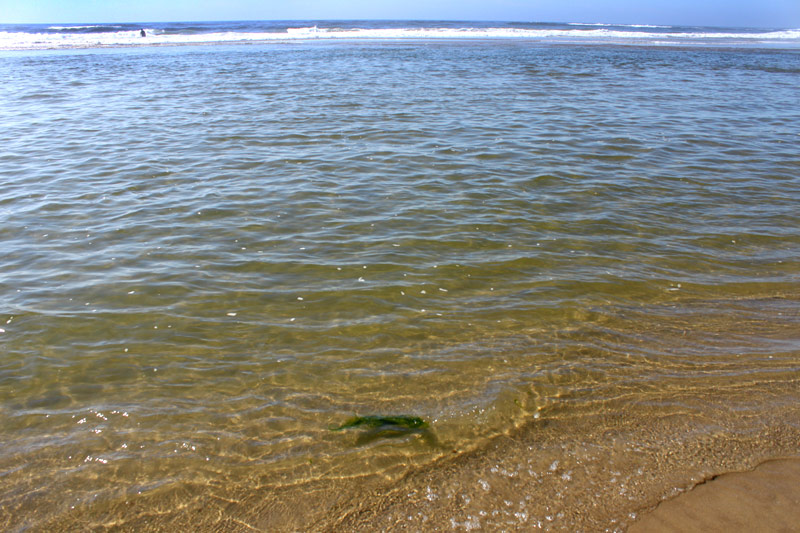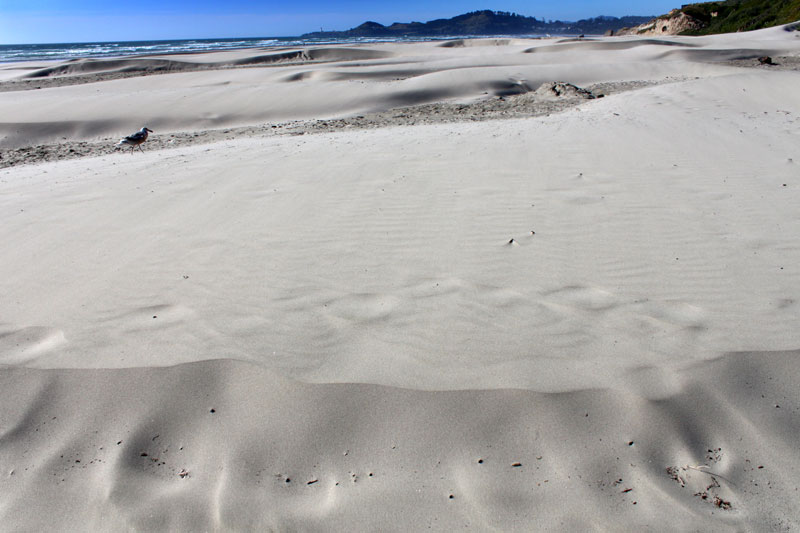Summer's Gnarly Danger Along Oregon / Washington Coast They Don't Talk About
Published 6/23/24 at 7:25 p.m.
By Oregon Coast Beach Connection

(Oregon Coast) - As the summer season unfolds, you may find yourself strolling along the tideline at the Oregon or Washington coast. The waves appear farther out than usual, inviting you to explore your favorite beach spots – such as, say, Moclips, Meyers Creek near Gold Beach, Cannon Beach or Pacific City. However, there’s a hidden danger lurking beneath the seemingly harmless surface. (Above: high sand levels create these unusual pools at the tideline at Manzanita - some are deep holes)
Includes exclusive listings; some specials in winter
In Cannon Beach:
Includes rentals not listed anywhere else
In Manzanita, Wheeler, Rockaway Beach:
Some specials for winter
In Pacific City, Oceanside:
Some specials for winter
In Lincoln City:
Some specials for winter
In Depoe Bay, Gleneden Beach:
Some specials for winter
In Newport:
Look for some specials
In Waldport
Some specials for winter
In Yachats, Florence
Some specials for winter
Southern Oregon Coast Hotels / Lodgings
Reedsport to Brookings, places to stay; winter deals
Heading out for a wade in the water? Yes, the danger of sneaker waves or large, gnarly breakers is less. But the idyllic scene masks the risk: what appears safe could lead to injury or even drowning, and it's something no one ever talks about.
Summer sand levels rise considerably along the coastlines, and this can create giant holes in the surf you can't see.
There is a hidden danger in conditions like these, where there are large pools of water that look harmless, but they are not. Summer's high sand levels on the Washington coast or Oregon coast produce large dune-like blobs of sand, and the spaces between them are rather deep. As long as you can see where you’re stepping, all is well. But imagine if those gaps were filled with water - then the situation changes dramatically. Vigilance is key in a new way you didn't know about.
You could find yourself falling into water much deeper than you were aware of.

Consider Tillicum Beach near Waldport, where a large pool lies in front of the tideline. You can see the bottom here (above). Yet what if you couldn't? And there's lots of times out here that you can't. If that's the case, you could be looking at a five-foot drop into the water.
The idyllic scene masks the risk: what appears safe could lead to injury or even drowning.
Luckily, the worst scenario doesn't happen often. However, feedback from Oregon Coast Beach Connection readers shows an overwhelming number of people having bad experiences with this. Stories range from the coastlines of California up through Washington and Oregon beaches.
One local teen in Cannon Beach died of just such an instance back in the 2000s.
What happens is that people are walking along those inviting sand bars above big pools of water, and then when they step into one of those pools they find it's a lot deeper than they thought. Some of these sudden drop-offs are five maybe ten feet down.
Part of the problem is that there's a big jolt to their body because they dropped down farther than they expected. It hurts your whole torso to some degree. But if these holes / drop-offs are deep enough, you can actually find yourself below water.

To get an idea what's happening, take a look at the giant sand dune tufts at Newport's Nye Beach (above). Note the difference in height. What if you were walking along the tops of these and could not see the drop? That tumble would hurt.
That's just what's happening in the tideline at summer's sand levels along the Oregon and Washington coast.
They're sometimes called crab holes – at least on the north Oregon coast. According to Oregon State Parks and Recreation, there does not appear to be a name for this unique issue.
Keith Chandler from Seaside Aquarium explains:
“The sand under the ocean is not flat,” Chandler said. “There are holes, deeper spaces between those sand bars, and they can be deeper than you realize.”
Chandler said that for kids, a three- to four-foot drop can mean serious trouble. On the extreme end, those ten-foot crab holes are just plain deadly.
“Just the shock of landing so deep and so hard can knock the breath out of you,” he said. “Then, if you've dropped down far enough, like even into the water, you can't catch your breath.”
If your head is just barely above water, that kind of shock can cause you to loose your footing and drown, or be taken away by an incoming wave. Also, the deeper the hole the better chances you'll get washed away with the tides.
Even if this is a depth you can usually swim your way out of, with that kind of shock to your body, the resultant instinctive breathing in means you're likely to swallow water.
What to look for? That's kind of complex.
“If you can't see the sand at your feet, it's too deep to go into,” Chandler said.
Oregon Coast Hotels in this area - South Coast Hotels - Oregon Coast Vacation Rentals - Where to eat - Maps - Virtual Tours
Cannon Beach Lodging
Nehalem Bay Lodgings
Manzanita Hotels, Lodging
Three Capes Lodging
Pacific City Hotels, Lodging
Lincoln City Lodging
Depoe Bay Lodging
Newport Lodging
Waldport Lodging
Yachats Lodging
Oregon Coast Vacation Rentals
Oregon Coast Lodging Specials
More About Oregon Coast hotels, lodging.....
More About Oregon Coast Restaurants, Dining.....
 Andre' GW Hagestedt is editor, owner and primary photographer / videographer of Oregon Coast Beach Connection, an online publication that sees over 1 million pageviews per month. He is also author of several books about the coast.
Andre' GW Hagestedt is editor, owner and primary photographer / videographer of Oregon Coast Beach Connection, an online publication that sees over 1 million pageviews per month. He is also author of several books about the coast.
LATEST Related Oregon Coast Articles
Folk With An Energetic French Accent: Bon Debarras Comes to Central Oregon Co...Lincoln City Cultural Center on Thursday, April 10. Lincoln City events
From Oregon Coast Wild to Historical, Stark Changes of Seaside Aquarium Exterior
Drastic shifts in look and features dot the attraction's history. Cannon Beach history
Authorities Seek Suspect Who Stabbed Baby Seal on Oregon Coast
Attack happened in Neskowin: see the police drawing. Weather
Coast Guard Barque 'America's Tall Ship' Coming to Portland Rose Fest, N. Ore...
Portland events: June 5 - 8; Astoria events June 13 - 15. Weather
A Less Expensive May in Newport: Handful of Oregon Coast Inns Still Offering ...
Inn at Nye Beach, Nye Beach Cottages, Ocean House BnB: Newport hotel specials. Newport hotel reviews
Whale Body Parts Found on Oregon Coast - Two Whales Strand on Washington Coast
One was a rare orca find; both suspected human interaction. Marine sciences
Pacific City Oregon Weather, 7-Day Forecasts, Live Conditions, Radar, Webcams...
Updated Constantly: Pacific City, Tierra Del Mar, Oregon Weather, Cams, Buoy Observations, Tides, Warnings - Alerts
Lincoln City's Oceanview Walk Park May be Tiniest on Oregon Coast
Squeezed between two buildings, it's the high vantage point no one knows. Travel, Depoe Bay, Newoport, Pacific City
Back to Oregon Coast
Contact Advertise on Oregon Coast Beach Connection
All Content, unless otherwise attributed, copyright © Oregon Coast Beach Connection. Unauthorized use or publication is not permitted



















































